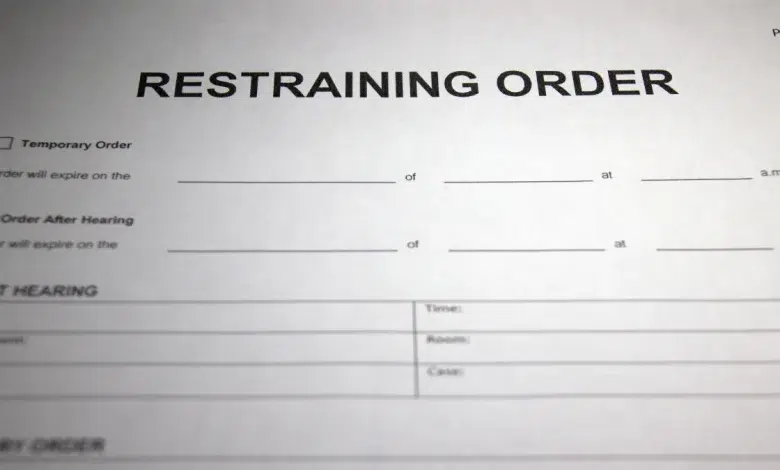Applying for a Restraining Order in South Africa? Don’t Make These Legal Mistakes

Table of contents
- What To Know When Applying for a Restraining Order in South Africa
- Understanding Restraining Orders vs. Protection Orders in South African Law
- Common Legal Mistakes When Applying for a Restraining Order
- Step-by-Step Guide to Applying for a Restraining Order in South Africa
- Brief Guide for Applying for a Protection Order in South Africa
- Comparative Summary: Protection Orders vs. Restraining Orders
- Important Tips to Avoid Legal Mistakes
- Where to Get Help
- Stay Safe
What To Know When Applying for a Restraining Order in South Africa
Applying for a restraining order in South Africa can be a vital step in protecting yourself from harassment, threats, or violence. However, the legal process can be complex, and making mistakes may delay or weaken your case. It’s important to understand how restraining orders differ from protection orders, which are specifically aimed at domestic violence situations. This article will help you avoid common legal errors, clarify the right steps to take, and empower you to navigate the application process with confidence. If you’re seeking safety through a restraining order, knowing these important details will increase your chances of obtaining the protection you need.

Stay informed and protected. Here’s what you need to know when Applying for a Protection Order? Don’t Make These Legal Mistakes. Click to learn what not to do when seeking legal safety.
Understanding Restraining Orders vs. Protection Orders in South African Law
Although used interchangeably, in South Africa, restraining orders and protection orders are legal tools designed to protect people from harm, but they differ in important ways:
- Protection orders are specifically governed by the Domestic Violence Act (No. 116 of 1998) and the Protection from Harassment Act (No. 17 of 2011). They protect individuals, often victims of domestic violence: from abuse, threats, or harassment within personal or domestic relationships.
- Restraining orders generally refer to court orders that can prevent a person from contacting or approaching someone but are used in broader contexts, not limited to domestic relationships. They can be issued under civil law and other court rulings to address harassment, threats, or stalking even outside domestic settings.
Knowing these distinctions helps applicants choose the correct legal path.
Common Legal Mistakes When Applying for a Restraining Order
- Incomplete or vague applications: Failing to provide clear details about the harassment or threat, including dates, places, and incidents.
- Insufficient evidence: Not submitting supporting documents like witness statements, medical reports, or police affidavits weakens the case.
- Filing in the wrong court: Applications must be lodged at the magistrate’s court with jurisdiction over the area relevant to the case.
- Lack of legal advice: Navigating the process without guidance can lead to errors or delays.
- Missing court dates: Failure to appear at hearings can cause applications to be dismissed or delayed.
- Confusing restraining orders with protection orders: Using the wrong legal procedure for the situation may hinder protection.
Step-by-Step Guide to Applying for a Restraining Order in South Africa
Step 1: Determine the Need for a Restraining Order
If you face harassment, threats, stalking, or violence, a restraining order may be appropriate. Legal advice can clarify whether your situation fits within restraining or protection order criteria.
Step 2: File an Application at the Magistrate’s Court
You will need to go to your local magistrate’s court and complete the required application forms. This includes a detailed affidavit explaining your situation and providing evidence of harm or threat. Legal counsel can assist in drafting a thorough and clear application.
Step 3: Court Hearing and Interim Order
Upon submitting your application, a magistrate will review it. In urgent cases, an interim restraining order may be granted immediately to provide temporary protection until the full court hearing takes place. This is crucial for immediate safety.
Step 4: Serving the Order to the Respondent
The court arranges for the temporary order to be served to the respondent, informing them of the restrictions and court dates for the final hearing.
Step 5: Final Hearing and Order
At the full hearing, both parties can present evidence. If the magistrate is convinced, a final restraining order is issued, legally prohibiting the respondent from contacting or approaching you as specified in the order. This order can cover various conditions, including no contact, no approach within certain distances, or forbidding harassment.
Step 6: Enforcing the Restraining Order
If the respondent violates the restraining order, you should report the breach immediately to the police. Violations are criminal offences and can lead to arrest and prosecution.
Brief Guide for Applying for a Protection Order in South Africa
Since these two orders are often related, here is a concise guide to applying for a protection order, which primarily addresses domestic violence and related abuses:
- Where to apply: Visit the Magistrate’s Court near your home, workplace, or where the abuse happened.
- Application: Complete the official protection order forms and submit a sworn affidavit detailing the abuse, threats, or harassment, with supporting evidence where available.
- Interim protection order: The court may grant an immediate temporary protection order to safeguard you until the final hearing.
- Serving the order: The respondent receives notice of the interim order and the court date.
- Final hearing: Both parties present evidence; the magistrate may grant a final protection order for a set period or indefinitely.
- Breaches: Report any violations to the police immediately, as these are criminal offences.
Comparative Summary: Protection Orders vs. Restraining Orders
| Aspect | Protection Order | Restraining Order |
|---|---|---|
| Legal Basis | Domestic Violence Act & Protection from Harassment Act | Civil law or other court orders |
| Purpose | Protects from domestic violence, abuse, harassment | Prevents contact/harassment, often broader context |
| Application Location | Magistrate’s Court | Magistrate’s Court |
| Scope | Domestic or personal relationships | Broader, may include non-domestic situations |
| Process | Affidavit required, interim and final orders | Similar steps: application, interim, final order |
Important Tips to Avoid Legal Mistakes
- Provide detailed, truthful information with dates, places, and incidents.
- Attach relevant evidence, such as police or medical reports.
- Apply at the correct magistrate’s court.
- Consult with a legal professional or support organisation.
- Attend all court hearings promptly.
- Keep copies of all court documents and orders.
- Report all breaches immediately to the police.
Where to Get Help
- Magistrate’s Courts across South Africa
- Legal Aid South Africa
- Non-governmental organizations and shelters supporting abuse victims
- Private attorneys specialising in family and civil law
- South African Police Services (SAPS)
Stay Safe
Applying for a restraining order is a key step in securing your safety from harassment, threats, or violence. By understanding the process clearly and avoiding common legal mistakes, you improve your chances of obtaining the protection you need.
Always ensure you apply at the correct court and seek legal advice when possible. Remember, a restraining order is a powerful tool that the law provides to protect you, but its success depends on thorough preparation and following the correct procedures. If the order is breached, report it immediately to the police to uphold your safety and the law’s protection. Staying informed and prepared will help you navigate the process with confidence and achieve the best possible outcome for your security.




